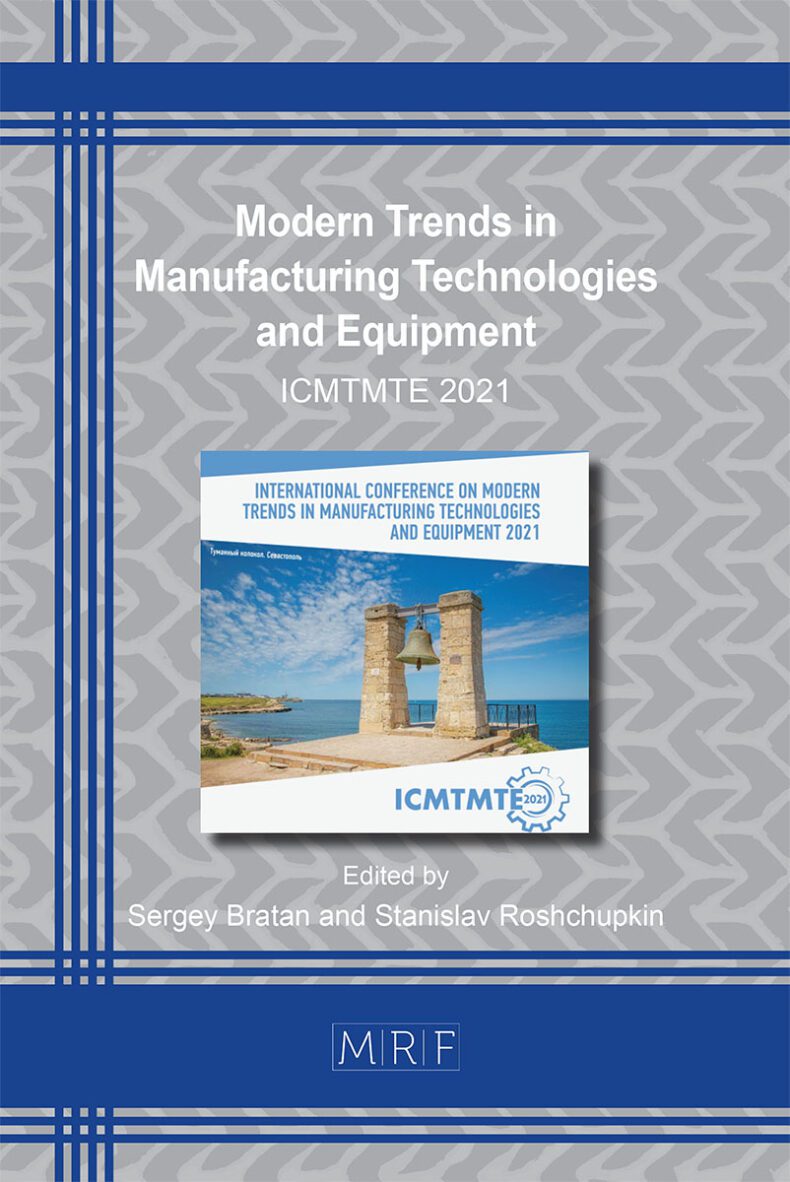Analytical and Experimental Study of Grinding Forces with Flap Wheels
Alexander N. Unyanin, Wladimir S. Chistjakov
download PDFAbstract. Analytically, the dependences for calculating the grinding forces with flap wheels are obtained. The forces were defined as the sum of the forces associated with dispersion and friction of the cutting and plastically deforming petal grains against the workpiece. The dependencies take into account the change in the depth of penetration of the grain into the workpiece material along the length of the arc of the contact of the circle with the workpiece. Numerical modeling and experimental study of forces have been carried out. The discrepancy between the calculated and experimental values of the forces does not exceed 20%.
Keywords
Grinding, Abrasive Grain, Flap Wheel, Force, Workpiece
Published online 1/5/2022, 5 pages
Copyright © 2022 by the author(s)
Published under license by Materials Research Forum LLC., Millersville PA, USA
Citation: Alexander N. Unyanin, Wladimir S. Chistjakov, Analytical and Experimental Study of Grinding Forces with Flap Wheels, Materials Research Proceedings, Vol. 21, pp 194-198, 2022
DOI: https://doi.org/10.21741/9781644901755-34
The article was published as article 34 of the book Modern Trends in Manufacturing Technologies and Equipment
![]() Content from this work may be used under the terms of the Creative Commons Attribution 3.0 licence. Any further distribution of this work must maintain attribution to the author(s) and the title of the work, journal citation and DOI.
Content from this work may be used under the terms of the Creative Commons Attribution 3.0 licence. Any further distribution of this work must maintain attribution to the author(s) and the title of the work, journal citation and DOI.
References
[1] Gdalevich A.I., Zhitnitskiy S.I., Khrychev V.I. etc. Polishing of parts with flap wheels. – M .: Mechanical Engineering, 1980. – 80 p.
[2] Korchak S.N. Productivity of the process of grinding steel parts. – M.: Mechanical Engineering, 1974. – 280 p.
[3] Filimonov L.N. Resistance of grinding wheels. – L .: Mechanical engineering. Leningrad branch, 1973. – 136 p.
[4] Ostrovsky V.I. Theoretical foundations of the grinding process. – L.: Publishing house of Leningrad State University, 1981. – 144 p.
[5] Efimov V.V. Model of the grinding process using lubricating coolant. – Saratov: Publishing house Sarat. un-that. – 1992. – 132 p.
[6] T. Yu, H. Su, J. Dai, W. Zhou Grinding Force and Specific Grinding Energy in Process of Grinding SiC with Single Grit. Nanjing Hangkong Hangtian Daxue Xuebao. Journal of Nanjing University of Aeronautics and Astronautics. – 2018. – 50(1):120 -125.
[7] Deguo Li, Jinyuan Tang, Haifeng Chen, Wen Shao. Study on grinding force model in ultrasonic vibration-assisted grinding of alloy structural steel. The International Journal of Advanced Manufacturing Technology. – 2019. – 101(9–12)
[8] Unyanin A.N., Khusainov A.S. The ultrasonic grinding process temperature field study // MATEC Web of Conferences. – 2017. С. 01011. SJR – 0,166. https://doi.org/10.1051/matecconf/201712901011
[9] Dubrovsky P. V. Grinding of titanium alloys with flap wheels. – Ulyanovsk: UlSTU, 2000. – 100 p.
[10] Verezub V.N. Sanding with abrasive belts. – M.: Mechanical Engineering, 1972. – 103 p.
[11] Khudobin L.V., Unyanin A.N. Minimization of contamination of grinding wheels. – Ulyanovsk: UlSTU, 2007. – 298 p.































